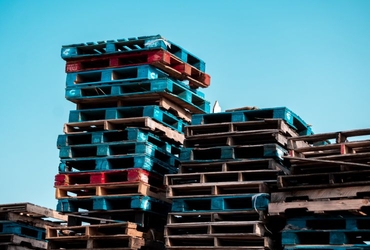
Advice on how to prepare your household goods properly for an international move
When moving overseas, goods travel inside standardized ocean freight containers . This is a very delicate and complex process that requires that those goods are prepared meticulously to prevent or minimize the risk of your belongings suffering any kind of damage or deterioration.
It’s important to know the different risks involved in this process to which our belongings are exposed during the shipment in order to apply the appropriate solutions. For that purpose, we have prepared this infographic for everyone who is thinking about moving and has doubts about how to prepare their belongings adequately.
##What happens during an international maritime shipment
FCL (Full container)
- The cargo will experience temperature changes
- If possible, have your belongings shrink-wrapped and loaded onto pallets
- The cargo will experience condensation
- Be sure to place something to isolate the cargo from the floor of the container
- The cargo will be subject to movement
- Try to leave minimal free space in the container; cover the bottom completely, and tie the load down securely
- Be sure that the pallets can support the weight of the goods; don’t pile anything too high, and don’t leave empty spaces
LCL (Shared container)
- Your belongings are part of a truckload
- The goods are stored in a warehouse
- The goods are loaded into a container with other cargo. Note cargo may shift during transit, so it is important to brace cargo to handle weight or balance changes as other cargo may lean against yours.
- During the shipment, the cargo is subject to the same problems as in FCL: humidity, temperature…
- The cargo will be subject to the same handling at its destination; this is why correct packaging is important
The journey of your household goods during an international maritime shipping
As you can see, the risks vary depending on whether the shipment is a full container load, FCL, or a less-than-container load , LCL, also known as groupage. When you’re dealing with LCL, where the cargo shares a container with other people, along with the challenges arising from a FCL shipment– condensation, humidity, changes in temperature, etc.– we also have to bear in mind that the cargo will be handled by third parties during several steps of the shipment, such as: when it’s loaded into a truck, when it’s unloaded at the warehouse, when the container is loaded, and then all over again at its destination.
Because of this, it is vitally important that your goods are perfectly prepared on the pallets, in the container, etc…and so here’s some advice:
- Before loading the goods into the container, it’s essential to ensure that the container itself is in good shape. If there is the slightest hole in the container, the cargo will obviously arrive wet. If you get a container that’s in poor condition, you have the right to ask for another. Make sure to take note of the container and the seal number used during loading and report that to your iContainers contact.
- Where possible, it’s a good idea to shrink-wrap your goods and secure them on pallets (shrink-wrapping means sealing goods in plastic wrap, as one often sees with suitcases at airports).
- In order to avoid the effects of condensation and humidity, it is very important that the cargo not be in direct contact with the floor of the container. You may want to put down a layer of pallets, even if the cargo itself is not being shipped on pallets.
- Pack the cargo in the container in a way that leaves the smallest possible amount of free space.
- If spaces are left, you’ll need to bind the cargo well—that is, secure it with straps so that everything is packed snugly.
- You’ll need to be sure that each pallet can support the weight of the cargo you’re putting on it. Don’t stack your pallets too high. If this happens, and there is space left in the container, the rows of pallets tend to get twisted, or possibly even tilted, and this can damage your goods.
If you have any doubts, you can always call our consultants and they will resolve them. Do not worry – and start preparing your international move!
For more great tips and advice for your overseas move, do check out and like our Facebook page.
Related articles:
Playing Tetris to calculate the volume of an LCL (groupage) shipment
6 tips to stretch your moving budget
8 common mistakes when moving internationally
Related Articles


